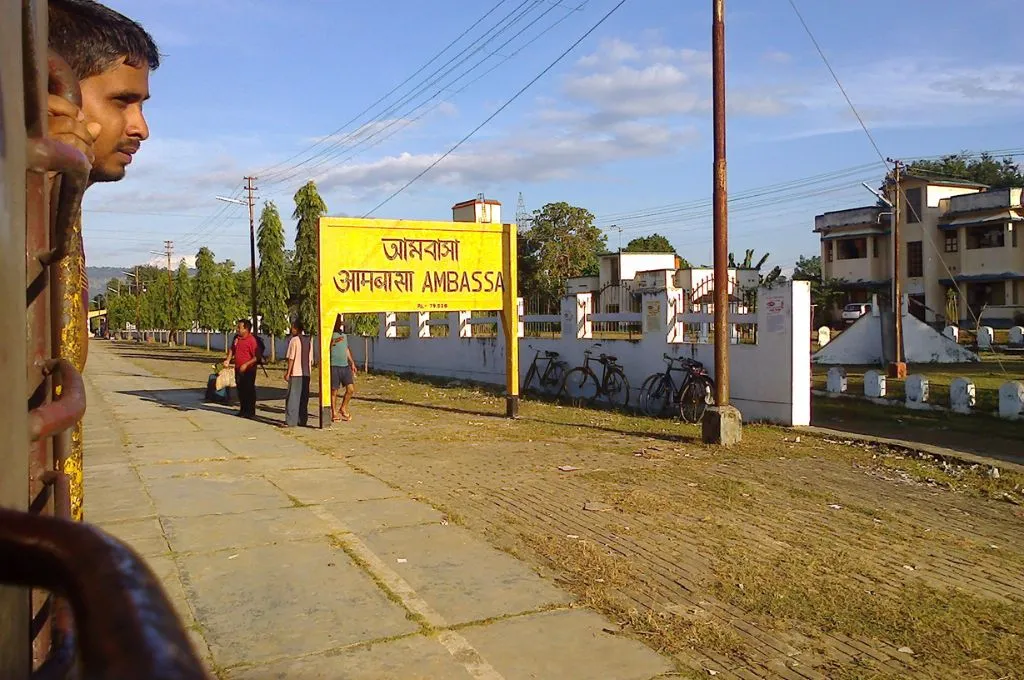One of the least developed states in India, Tripura faces many challenges due to its geographical isolation. These include poor access to healthcare, education, and livelihood opportunities.
The social sector in the state works to ensure the development of the communities it caters to. But the sector itself constantly grapples with scarcity of funding; a limited talent pool; and, most importantly, the absence of a nonprofit ecosystem to learn from.
Voluntary Health Association of Tripura (VHAT) was established in 1988 as a nonprofit in Tripura. From its inception, VHAT has been involved across various sectors, including health, elementary education, and environmental standards. We’ve worked with the state government on prevention and cure of malaria and tuberculosis. We function as a state-level network of nonprofits, building the capacity of member organisations is one of the primary focus areas of VHAT.
Over the years, our organisation has evolved to accommodate the needs of our communities. We have also found ways to navigate the difficult social sector landscape in Tripura. But the journey hasn’t been easy. Here are some lessons from our experience of running and sustaining the nonprofit in the state. These insights can be helpful for young nonprofit leaders in Tripura, and they can also be beneficial for organisations in the state that aspire to scale their operations.
The challenges faced by nonprofits in Tripura
1. There is no support for capacity building
Every year we host a two-day annual conference for the smaller nonprofits in our federation, which includes sessions on capacity building. If the organisations want to learn more about a specific theme such as climate change or organisational governance, we help them with that. But we don’t have any direct funding for this. This means that we are only able to take up short-term initiatives.
This is not just a challenge for smaller organisations; VHAT too needs capacity-building support. We wish to learn from the practices of organisations that have successful models in other areas, but the opportunities are hard to come by. When they do, we make it a point to send our members so they can build partnerships.
Geographical isolation adds other barriers as well for the nonprofits in Tripura. For instance, while a larger nonprofit can attend an event in Guwahati, travelling to Delhi remains a costly and time-consuming affair.
We are trying to set up a network of organisations in the Northeast, and are in the process of building coalitions of nonprofits in states such as Tripura and Mizoram. The aim is to create a social sector ecosystem in places where none exist, which will also help build the capacities of organisations in these areas.
2. For many, a social sector job is not stable employment
The social sector in Tripura is not formalised like it is in many other states in India. The general understanding is that the nonprofit sector cannot provide sustainable employment. Many nonprofit leaders have a day job in the public sector and engage in social work in their free time. This often makes it difficult for them to prioritise, leading to lost opportunities. For example, if a government official calls a sudden meeting during the day, they aren’t able to make it without missing work. In the long run, they also struggle to grow their organisation.
The mindset in the state is that you choose to work in a nonprofit only when there’s no other option left. It isn’t even a question of pay; we have seen people leave our organisation for significantly lower pay in the public sector because they consider that job to be stable. For organisations like ours, this means there is a very small talent pool to choose from. Some organisations want candidates with very specific qualifications to be hired for certain projects—how do we explain to them that most of our youth would choose anything but a nonprofit job?

3. There’s no funding, and no one’s telling us why
Many funders only visit Guwahati in Assam, and do not go any further, because it is the easiest to reach. No one comes to Agartala. In the past, people would cite bad connectivity as a reason, but now there are flights; there is train connectivity here.
Tripura doesn’t have many industries. Earlier, CSR funders would say that they cannot invest in the development of the areas where don’t have an existing business. But the government has amended the CSR Act to allow companies to spend on social work even in places where they don’t have their plants. The act clearly states that a preference for the local area of the company for spending is directory and not mandatory. But companies are still not investing in Tripura.
I was at an event last year where a CSR foundation was presenting their expenditures in various states; against Tripura, the figure was less than 1 percent. So I asked them why there weren’t any projects in Tripura, and they said they couldn’t find any documented nonprofits here. I told them I could recommend five nonprofits from our state, with all compliances fulfilled and everything up to date, but when I reached out to them later there was no response. We hope to connect organisations in states such as Tripura and Mizoram to CSR foundations that are willing to make this connection.
Lack of communication from funders is another issue that we deal with. We have applied for so many grants, filled in lengthy compliance forms, gone through several selection rounds to ultimately reach nowhere. Funding organisations have stopped communicating with us even after shortlisting us for grants. If our proposal was not up to the mark or if we made a mistake, we deserve to know. That’s the only way we will improve and develop a better approach.
While these are the obstacles we face, we have found ways to navigate some of these challenges. Here’s what has worked for us.
Strategies for survival and growth
1. Be patient and learn to adapt
For the initial years, organisations should just do the work and play the waiting game. They may not land a big project immediately and may not get substantial funding, but this happens eventually. They should start small by raising money locally and cutting costs wherever they can. We still do this. Recently, we were hosting a meeting of 15–16 people, and realised that renting a room would cost us INR 4,000–5,000. So we reached out to the district magistrate, who allowed us to use a room in a government property at no cost.
Many nonprofits also lack proper documentation, which works against them with funders. For example, we had partnered with American India Foundation for a project in Sepahijala district, and they wanted us to involve a few grassroots organisations. If the smaller organisations have regular documentation, we can recommend them in such instances because funders need these to be able to understand their work.
Another important thing is flexibility. There’s very little funding available, and at times an organisation might have to tweak their projects to meet funder demands. Recently, we had to do this while working with a foundation that wanted us to focus on livelihoods while we wanted to focus on health. In the end we said, “We have a decade of experience of working on livelihoods, so why not?” Once the funders have seen our work and we have earned their trust, we can have a conversation about why we need money for other pressing needs.
2. Choose an innovative hiring method
For a project manager position, funders sometimes prefer candidates who have a master’s in social work (MSW) degree. But we don’t have a large pool of such candidates willing to work for us. For one such project on healthcare, we went through the interview process and didn’t find a single suitable candidate. We had a person in our team who didn’t have an MSW degree but had worked with us for 10 years. He was a project in-charge when we were working on COVID-19 relief and a pharmacist, and had studied sociology; he knew about health and the sector. So we told the funders that we have faith in his work.
After some convincing, the funding organisation agreed that it was we who had to implement the project, so we must take the call. The lesson for us was that we should prioritise experience over demands for educational qualifications that we know we can’t meet.
3. Work closely with local governance
We work in partnership with the government and attend all meetings at the panchayat, block, and state levels. The government invites us for these because we are active participants; if we stop attending their meetings, they will forget about us.
The state government in Tripura also funds many development projects, and having a good rapport with them is beneficial. We make it a point to invite government officials to our events so that they get to see the work that we do.
These strategies can help nonprofits stay afloat and continue to serve the underserved people in Tripura. However, the organisations still need development stakeholders to step up and take responsibility to be able to do more. CSR funders can extend support to organisations that have been working in low-resource environments; they can involve local nonprofits in implementing development projects in Tripura. The government can promote grassroots organisations for projects such as Tripura Rural Livelihoods Mission, because these organisations understand the communities and their needs. This is the only way to build a functioning social sector ecosystem.
As told to Anupam Sharma, IDR Northeast Media Fellow, 2024–25.
—
Know more
- Learn about Tripura’s industrial investment policy, 2024.
- Understand the factors affecting livelihood opportunities in the state.
Do more
- Connect with the author at sujittripura@gmail.com to learn more about and support his work.





